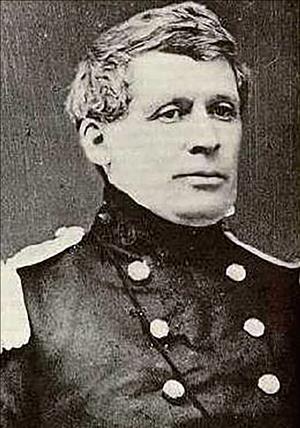On September 8, 1858, U.S. Army Colonel George Wright (1803-1865) orders his troops to slaughter 800 Native American horses (the herd of a Palouse chief) at Liberty Lake to deny their use by enemy tribes. Soldiers also destroy Native American lodges and storehouses of grain. Wright is engaged in a punitive military expedition against the Yakama, Spokane, Palouse, and Coeur d'Alene tribes, which had defeated Lieutenant Colonel Edward Steptoe's force on May 17 and 18, 1858. Horses represent both the wealth and military power of the tribes. The slaughter along with the destruction of the food supply devastates the tribes.
Wright's campaign stemmed from the defeat of Lieutenant Colonel Edward J. Steptoe (1816-1865) and a small force of mounted soldiers on May 17 and 18, 1858, near what would become Rosalia. Steptoe was attempting to punish the Palouse Tribe for the killing of white settlers (the land east of the Cascades had been closed to settlement by the Army). From his base at Walla Walla, Wright launched a campaign against the tribes north of the Snake River. He prevailed at small engagements at Four Lakes (September 1, 1858) and Spokane Plains (September 5, 1858) and established a camp on the Ned-Whauld River. From this headquarters he demanded that the tribes surrender or face "extermination" (Stimson, 16).
Two companies of soldiers were detailed to shoot the animals and destroy the structures. Shooting the horses took an entire day and most of the next. Wright spared 150 animals for his own troops, but the untrained stock prove useless and was destroyed as well. The carcasses rotted into piles of bones that marked the site that became known as Horse Slaughter Camp near what later became Aturdee, east of Spokane.
The Indians spent a difficult winter, with a number of deaths from starvation of the old and very young.

